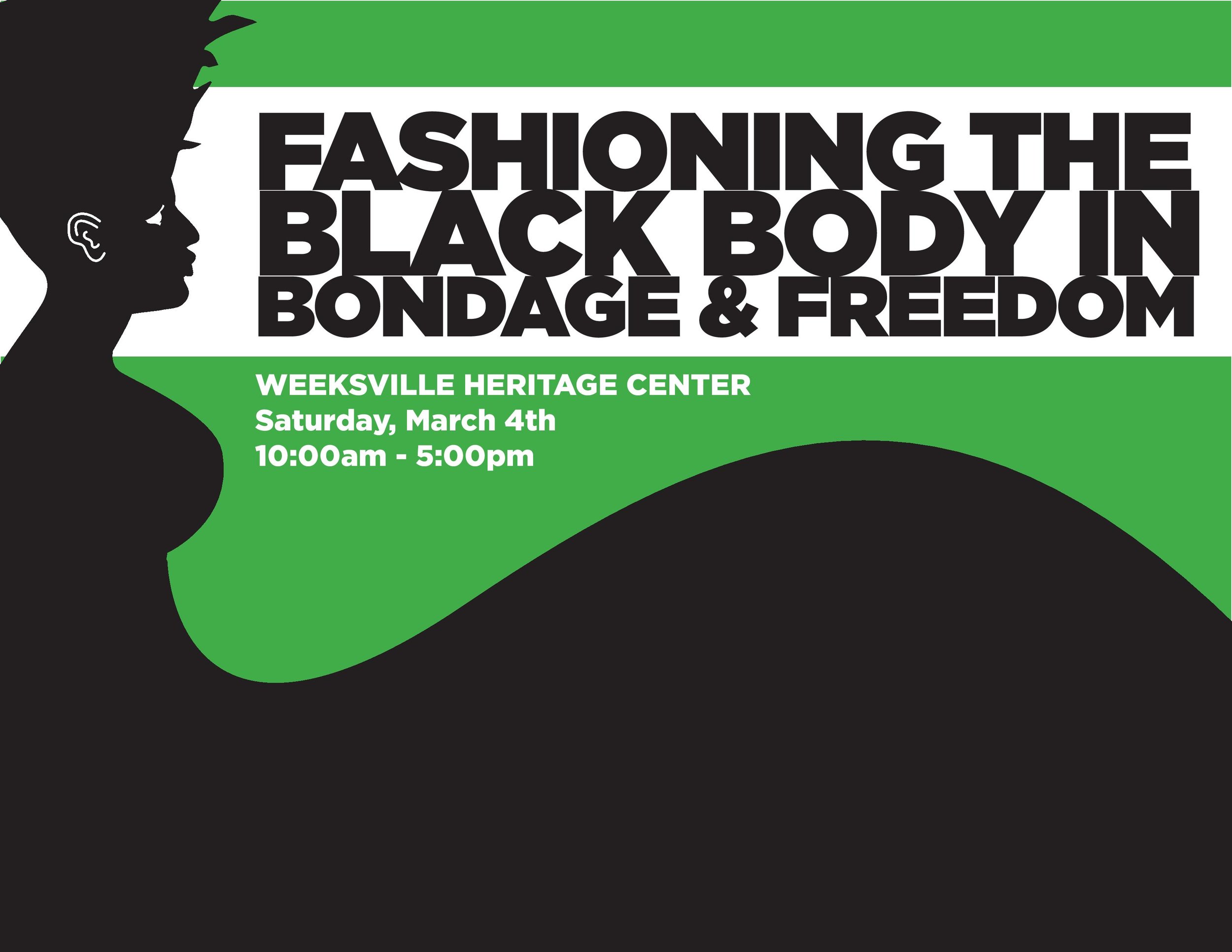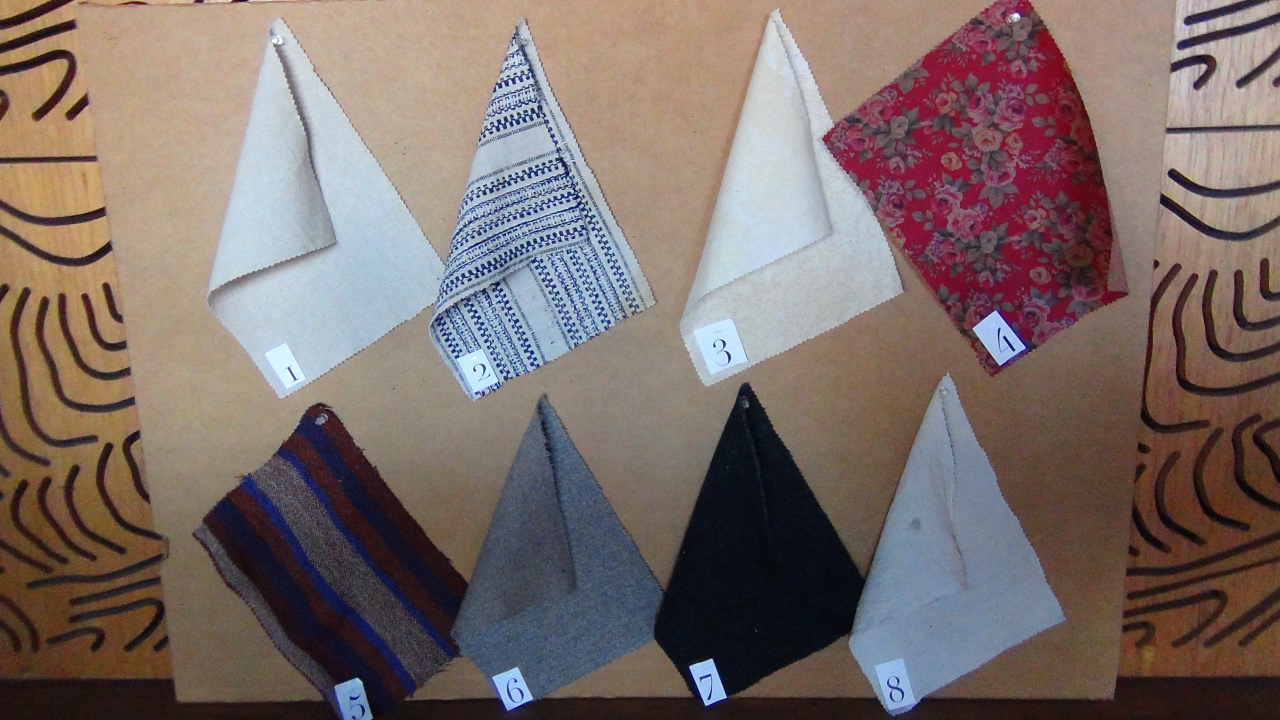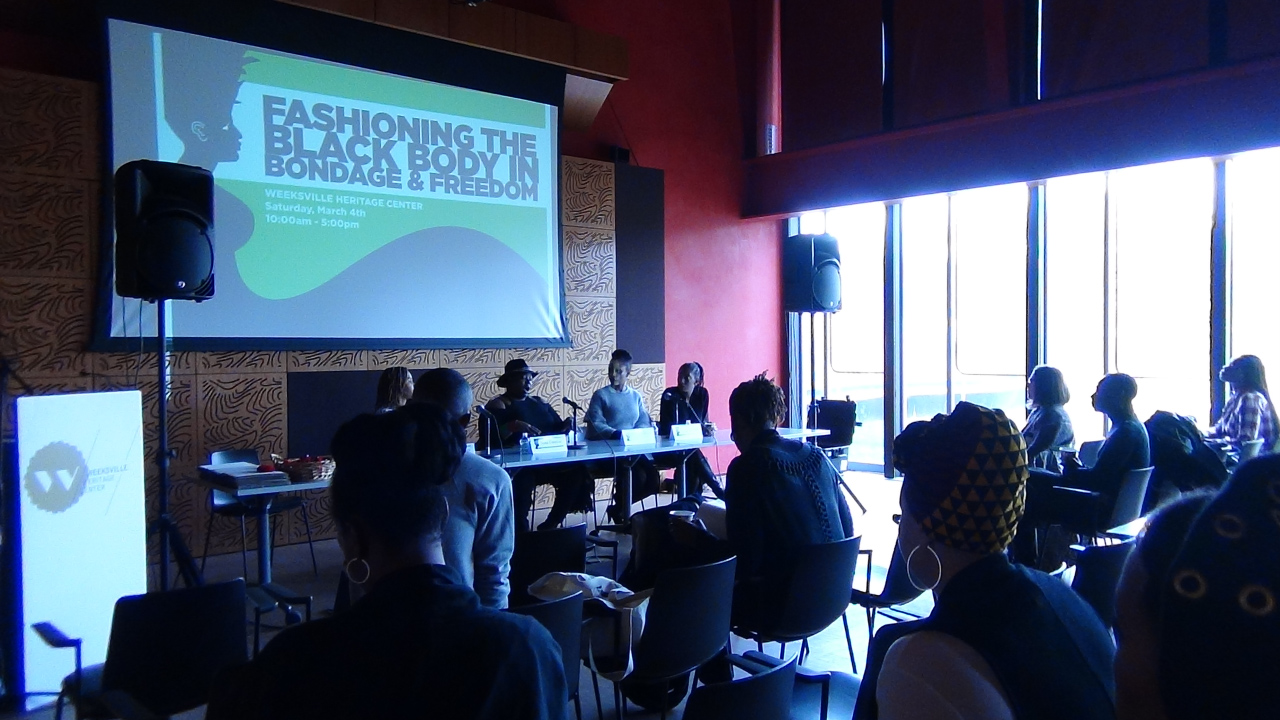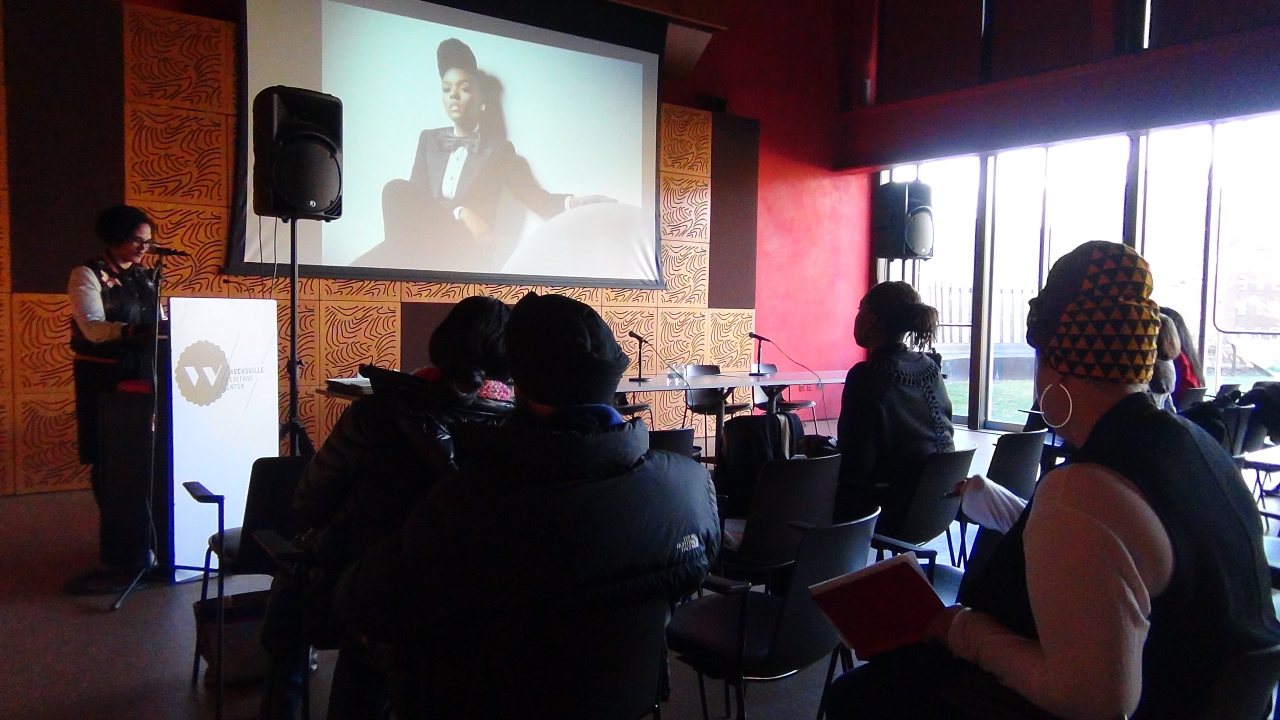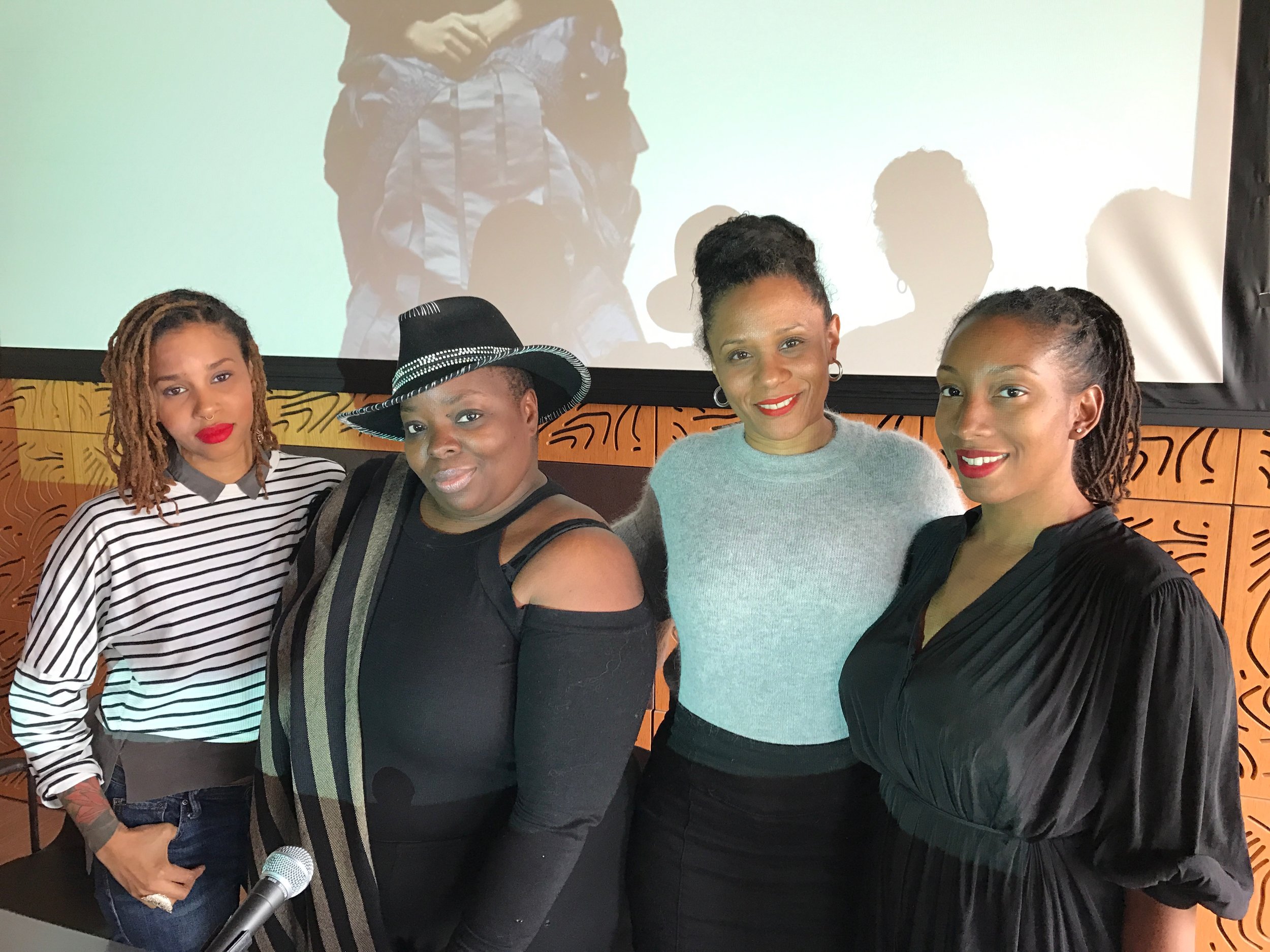#FashioningTheBlackBody Reading List
I launched and currently run Fashioning the Self in Slavery and Freedom, which is a curatorial platform that explores intersections between slavery and the fashion system on various social media outlets. On Fashioning the Self, I post articles (written by myself) and images and videos paired with explanatory captions. The formula has proven successful. On Facebook and Instagram, the project has amassed thousands of followers, who include graduate students, professors, costume designers, artists, and people who happen to be interested in the topic.
An outgrowth of this line of research was a conference titled “Fashioning the Black Body in Bondage and Freedom” on March 4, 2017 that I organized in collaboration with the Weeksville Heritage Center in Brooklyn, NYU Costume Studies, NYU History Department, and the NYU Graduate School of Arts and Sciences. The conference explored some of the many facets of the intersection between slavery and fashion, bringing scholars, designers, and artists into conversation around this understudied (and often challenged) topic. The conference kicked off with tours of Weeksville, a neighborhood founded by free blacks in the nineteenth century that is now an archeological site and community center. The conference included a conversation that I moderated between four artists whose work grapples directly with the connections between slavery and dress, a hands-on workshop that explored the textiles used for enslaved people’s clothing, and several academic panels.
This reading list encapsulates the spirit and mission of the conference, which explored the generative possibilities born out of slavery. Despite its brutality, this peculiar institution could serve as a source of sartorial genius for enslaved peoples.
1. Monica L. Miller, Slaves to Fashion: Black Dandyism and the Styling of Black Diasporic Identity
Monica Miller was the keynote speaker at the conference. Her work has been so seminal to how I and the other conference participants understand the connection between the institution of slavery and the fashion system. Moreover, studies on this topic disproportionately focus on women—as all thing related to fashion. Miller, however, is interested in a masculine form of sartorial bravado: dandyism. Her groundbreaking research on the origins of black dandyism in slavery was a much-needed addition to this burgeoning field. At the conference, she shared that she could have never imagined a conference on this topic happening when her book was published just eight years ago.
2. Tamara Walker, Exquisite Slaves: Race, Clothing, and Status in Colonial Lima
In Exquisite Slaves, Tamara Walker explores how enslaved peoples in 18th and 19th century Lima, Peru employed dress and adornment to assert their own sense of self and dignity. Walker uses fashion as lens onto the experience of these Peruvians of African descent. Fashion was one of the few arenas in which these slaves had an opportunity to exert a modicum of control because it was, in spite a number of constraints, open to their adaptation. In considering fashion, Walker acknowledges the influence, but also the limits of slaveholders’ racial domination.
3. Tera Hunter, To ‘Joy My Freedom: Southern Black Women’s Lives and Labors After the Civil War
In her study of African American women in post-Civil War Atlanta, Hunter emphasizes their ability to construct identities outside of the stereotypes imposed by white employers and governmental authorities. By focusing on black female subjects, most of whom were domestics, Walker reconstructs their attempts to fashion new identities and build communities in the wake of slavery. I find the eighth chapter on black women’s leisure time in dance halls and clubs to be of particular interest to fashion scholars. In this chapter, she focuses on dance and fashion to show how these women constructed identities that flaunted respectability politics.
4. Thavolia Glymph, Out of the House of Bondage: The Transformation of the Plantation Household
Glymph throws a wrench into the feminist myth of the harmonious union between white mistresses and their enslaved domestics under the umbrella of patriarchy. Drawing on a rich variety of sources, most notably WPA Narratives and memoirs of former slave owners, she proves that the relationship between enslaved domestics and their female owners in the plantation household was tense and often violent. Many of their conflicts unsurprisingly revolved around fashion and self-presentation. In the seventh chapter, I find her discussion of “large rights” (i.e., male suffrage, land ownership, access to education, etc.) versus “small rights” (i.e., the right to laugh as loud as you want, to wear a ribbon, to spend meager wages on a bauble, etc.) to be a particularly helpful model in understanding enslaved agency and subjectivities as it related to fashion.
5. Elizabeth Keckley, Behind the Scenes, or, Thirty Years a Slave, And Four Years in the White House
When Elizabeth Keckley revealed intimate details about the Lincoln household in her tall-all memoir Behind the Scenes, the Washington political elite was none too pleased with this “uppity negress.” After buying herself and her son out of slavery, Keckley quickly became the go-to dressmaker for the wives of D.C.’s most prominent politicians, most famously Mary Todd Lincoln. In this understudied slave narrative, Keckley speaks about her early life as a slave, but also spends a great deal of time discussing the innerworkings of the political establishment during the Civil War. In my opinion, no other work more fully demonstrates the relationship between slavery, fashion, and politics, particularly as it relates to enslaved and formerly enslaved peoples.
Stephanie M. H. Camp has shown that slaves in the U.S. South went to great lengths—often risking their personal safety—to attend dances and other events that offered them opportunities to wear “fancy dress.” For women, wearing full skirts with hoops fashioned out of grapevines or tree branches and dresses with colorful and vibrant patterns helped not only to show off their feminine curves, but also to showcase their ingenuity and creativity in procuring and designing festive attire. In dressing up, those men and women claimed their bodies as sites “not only of suffering but also (and therefore) of enjoyment and resistance.”
7. Julie Dash, Daughters of the Dust
This is visually arresting film follows an intergenerational family drama in a Gullah community in coastal South Carolina at the turn of the century. It also served as a visual inspiration for Beyoncé’s last album Lemonade. Infidelity, black female empowerment, and father-daughter relationships are important themes in her visual tour de force. However, another recurring motif throughout the hour-long personal journey is the reimagining the enslaved past into the present. Slavery’s cultural legacy is a subtle backdrop throughout the visual album, particularly in the set designs and styling. Just as the album’s title references the practice of turning lemons into lemonade, the bitterness of slavery serves as a wellspring for artistic inspiration in Beyoncé and Julie Dash’s creative vision.
8. Carol Tulloch, The Birth of Cool: Style Narratives of the African Diaspora
The Birth of Cool is a sweeping exploration of black fashion that jumps from nineteenth-century to turn-of-the-century Jamaica to Civil Rights-era United States to post-apartheid South Africa, among other places. Fashion historian and curator of Afro-diasporic visual culture, Carol Tulloch, examines what she calls “style narratives” of people of African descent. She reflects on individual or group styling choices of well-known and anonymous members of the African diaspora to understand their idea of black modernity. I find her first chapter on the representation of Jamaican higglers (market women) on colonial postcards as a “graphic symbol of colonial discourse” most germane to this syllabus.
9. Tanisha C. Ford, Liberated Threads: Black Women, Style, and the Global Politics of Soul
Though Tanisha C. Ford is a historian of the twentieth century, the use of fashion to push for greater political liberation that she explores in this book certainly has roots in slavery. Moreover, she provides a theoretical framework for understanding the visual language of sartorial resistance among people of African descent. During the transatlantic civil rights struggles of the mid-twentieth century, black female activists in the U.S., Great Britain, and South Africa donned African and African American-inspired hairstyles and dress, or what Ford calls “soul style,” as a profoundly political act.
10. Shatema Threadcraft, Intimate Justice: The Black Female Body and the Body Politic
Threadcraft redefines the meaning of justice by focusing on the black female body as a key site of legal claims-making. Though Threadcraft is interested in infanticide, sexual terrorism, and coerced sterilization, I think it is also helpful to bring her research questions concerning violence against the female black body in conversation with dress and adornment. In many moments in U.S. history, there was no terrain more fraught than the black enslaved body; sometimes questions of equality and justice manifested themselves on black bodies sartorially. FYI: the cover of the book features the art of conference presenter Ayana V. Jackson!

